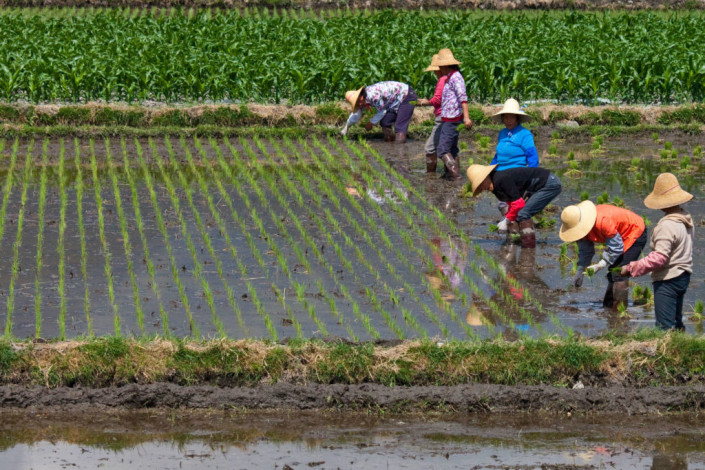
Local people play a guessing game in a mountain village in southwest China. A new climate-friendly way of growing rice is being tested here that will reduce methane emissions. So, what is the yield difference between this and conventional methods? After a while of speculation, the results are published: the new method can increase the yield by about 20%.
Although it seems far removed, the rice cultivation in this village is connected to a joint statement made by China and the US at the COP26 UN climate conference in 2021. In it, China said that by COP27, which was held in November 2022, it would produce a “comprehensive and ambitious national action plan on methane”, to achieve significant results in controlling and reducing emissions by 2030.
The full text of that plan is not yet available. But during COP27, China’s climate envoy Xie Zhenhua said the text has been written, and that it focuses on three areas: energy and natural gas; agriculture; and waste handling.
Reducing methane emissions is an urgent problem and is viewed as essential to keeping the global average temperature increase below 1.5C. Methane has 86 times more warming potential than carbon dioxide over a 20-year timescale, according to the IPCC (Intergovernmental Panel on Climate Change). While the International Energy Agency has said methane accounts for 30% of global warming since the industrial revolution.
Methane remains in the atmosphere for about a decade, so rapid emission cuts could quickly reduce its contribution to global warming, winning some valuable time to avoid disastrous warming. This is the goal of the Global Methane Pledge, an initiative to voluntarily reduce global methane emissions by at least 30% from 2020 levels by 2030, which is currently endorsed by 150 countries. China has not joined the initiative, but as the world’s biggest emitter of methane – accounting for 14.3% of global emissions – its actions, together with other major emitters, will be crucial.
In China, unlike other industrialized countries, paddy field rice farming is a significant source of gas, accounting for 16% of human-caused methane.
Last year, the government published policy guidance on cutting methane from rice farming, while new planting methods and technologies are being tested in the field. However, as we shall see, the small profits available from small-scale rice farming in the south of China pose problems for promoting climate-friendly techniques.
Meanwhile, the center of rice farming has been shifting northwards, where less water-intensive techniques are producing less methane. In parts of China’s vast expanses of paddy fields, methane emissions are quietly falling.
Why does paddy farming produce methane?
The microorganisms that produce methane are some of the most ancient forms of life. Known as “methanogens” they are widely found in oxygen-poor environments such as lakebed silt, animal intestines and flooded paddy fields.
Rice can grow in dry ground, but farmers found when domesticating the plant that it also grows well in flooded fields, while the weeds it competes with do not. Paddy field farming therefore developed and has remained largely unchanged for millennia.
The water in paddy fields acts as a barrier between the air and soil, creating the ideal oxygen-poor environment for methanogens, while organic matter excreted by the rice’s root systems provides nutrition. Those ancient organisms thrive in the water-logged soil, emitting methane as they do so.
China is the world’s largest rice producer, utilizing 30 million hectares of land for rice farming in 2021, and producing a harvest of 210 million tonnes, according to the National Bureau of Statistics. Rice is the staple food for 65% of China’s population. The country has 20% of the world’s paddy fields and produces 29% of the rice, according to a paper published in 2018 in the Chinese Journal of Eco-Agriculture.
But those paddy fields are Chinese agriculture’s biggest source of methane emissions. According to the government’s Second Biennial Update Report on Climate Change (2018), China emitted 55.3 million tonnes of methane in 2014, with 22.2 million tonnes of that coming from agriculture. Paddy field rice farming accounted for 8.9 million tonnes or 40% of all agricultural emissions. Research has found that paddy fields in China produce 29% of global paddy field methane emissions.
See details.
Source:
Online/GFMM
Comment Now